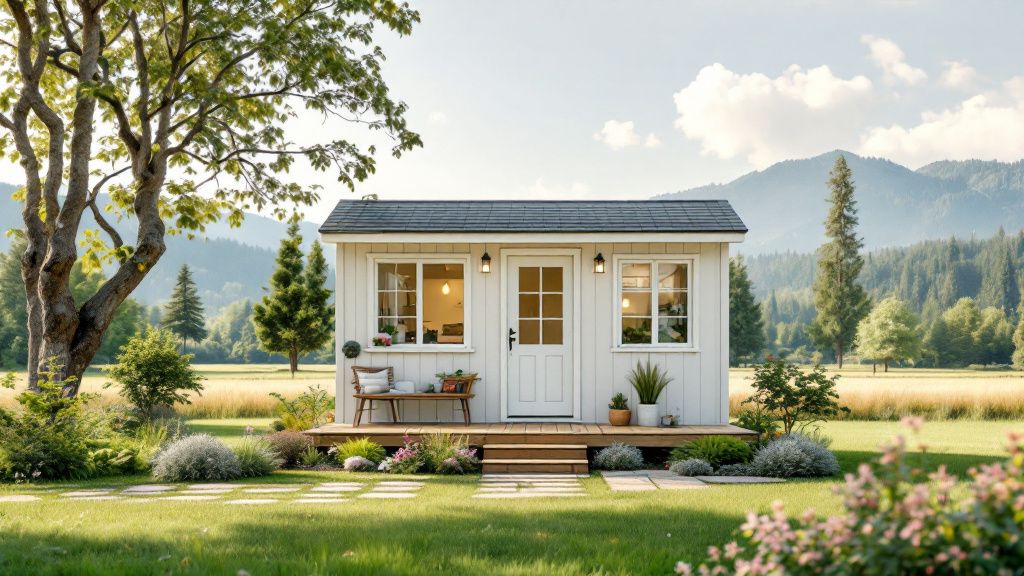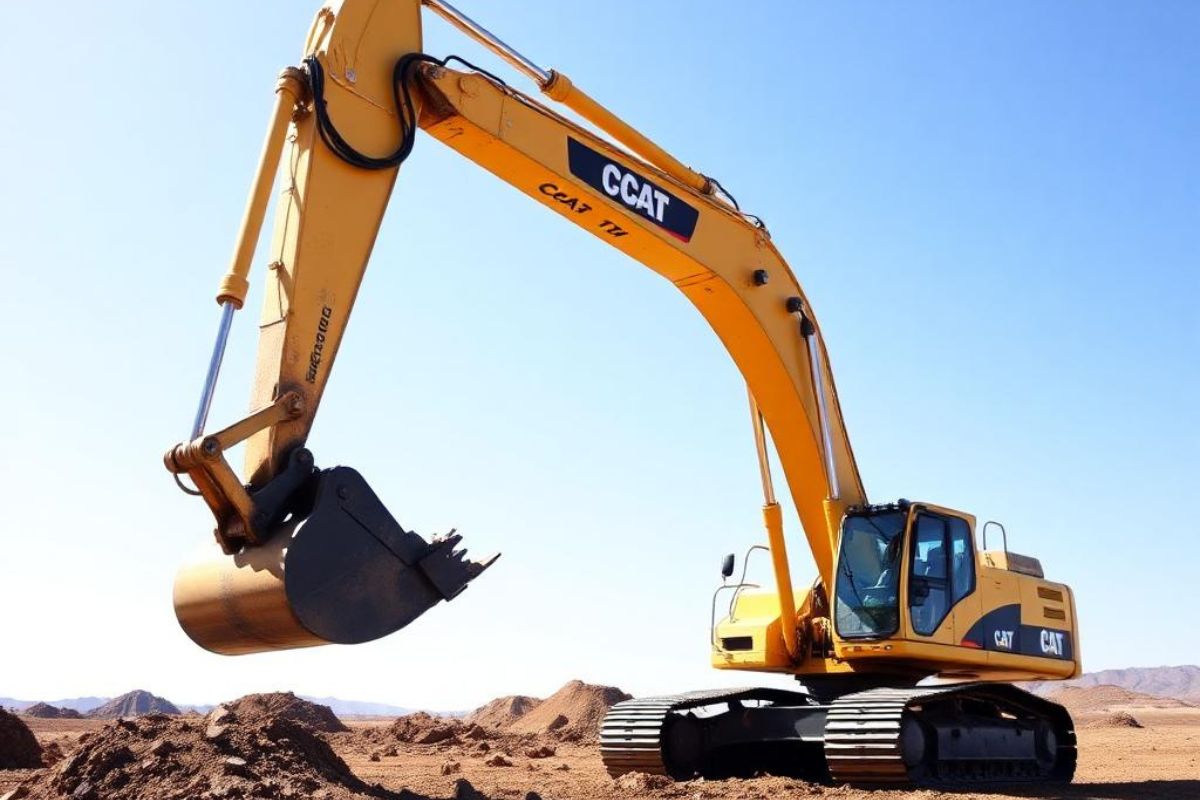Your creativity and resourcefulness are more valuable than you think, and there are countless ways to acquire salvaged materials, free resources, and volunteer labor. This journey of sustainable and affordable living is not only possible, but within your grasp.
Curious about how to bring your dream home to life? Stick around, there's more to uncover.
Plan plan plan
Before you even pick up a hammer, it's essential to have a well-thought-out plan for your tiny house construction. Remember, planning is the foundation of any successful project. Start by grasping the tiny house movement. It's not just about building a smaller home, but embracing a lifestyle of simplicity, sustainability, and freedom from debt.
Next, explore the feasibility of building a tiny house with a zero or low-budget. It may sound challenging, but with creativity and resourcefulness, it's more than achievable.
Look into using salvaged materials for construction - discarded items from construction sites, materials from recycling centers, or giveaways on online platforms. Not only can these cut costs, but they also add unique character to your tiny house. From wreaths and exterior decor to smaller items around the house, the options are endless!
Furthermore, consider minimalist design principles. Smart design, efficient layouts, and multi-functional furniture are your keys to maximizing limited space. It's all about practicality and functionality without compromising on style.
Finally, familiarize yourself with budget-friendly construction techniques. Though we'll dive deeper into this later, grasping how to leverage salvaged materials, skip on non-essential features, or even do the labor yourself can give you a head start on your project.
Create a budget
Having a well-thought-out plan in place, you're now ready to tackle the financial aspect - creating a budget for your tiny house construction. This is an important step as it guides your decisions and keeps you from overspending.
Start by estimating the total cost. Consider the price of materials, tools, permits, and other expenses. It's best to overestimate a bit to cover any unexpected costs. Jot down every single item you'll need, from nails to insulation, and price them out.
Use online resources, local hardware stores, or recycling centers to get a fair idea of costs.
Next, you'll need to figure out how much you can spend each month. This will depend on your income and other financial commitments. Be realistic and try not to stretch yourself too thin.
Lastly, prioritize your spending. Some things are essential, like a sturdy foundation and a waterproof roof. Other things, like high-end finishes, can wait. Stick to your budget and adjust it as needed.
Remember, building a tiny house is about realizing your dream of a simpler, more affordable life. It's not about crippling yourself with debt.
Ask friends & family for help
Don't hesitate to enlist the help of friends and family in your tiny house project, as they can provide invaluable support, from hands-on construction assistance to important advice based on their expertise.
They might have skills or tools you lack, and their input could save you from costly mistakes. Plus, the shared experience can strengthen your bond with them.
A friend with carpentry or electrical skills can be a real asset, guiding you through complex tasks and ensuring your house is safe and sturdy. Don't be afraid to ask for help; people often enjoy lending their skills to meaningful projects.
Your family members can also be a great resource.
They may offer not just physical help, but also emotional support, encouragement, and possibly even financial assistance. Their backing can keep you motivated, especially when the going gets tough.
Choose reclaimed or surplus
Opting for reclaimed or surplus materials in building your tiny house is a smart and cost-effective strategy. These materials can often be found at a fraction of the price of new counterparts, or even for free. It's not just about saving money, though.
By using reclaimed materials, you're also contributing to a more sustainable environment by reducing waste.
Start by looking at local construction sites for discarded materials. It's surprising what you can find that others might disregard. Also, consider visiting recycling centers or scrap yards.
They often have a great selection of surplus building materials like wood, metal, and even windows.
Online platforms like Craigslist or Freecycle can be a gold mine of free or low-cost items.
Be patient and persistent in your search. You'll often come across people who are remodeling and looking to get rid of old materials.
Check out financing options
While building a tiny house on a shoestring budget, exploring various financing options can play a pivotal role in making your dream a reality. Don't shy away from considering loans or grants tailored specifically for tiny house construction.
These can greatly ease the financial strain and make the process more manageable.
You could look into personal loans, which offer flexibility with regard to usage.
Credit unions or online lenders generally have lower interest rates compared to traditional banks. Another option is a home equity line of credit (HELOC), although this requires you to have equity in an existing home.
Additionally, some states provide grants for eco-friendly housing projects.
If your tiny house meets certain environmental standards, you might be eligible for such funding. Non-profit organizations also offer grants and loans to support affordable housing initiatives.
Crowdfunding platforms like GoFundMe or Kickstarter can be another route to generate funds. You can share your tiny house vision with others and raise money through donations.
.jpeg)
Look for free or low-cost materials
Scouring local construction sites, recycling centers, and online platforms can help you find free or low-cost materials perfect for your tiny house build. Construction sites often have leftover materials like wood, metal, and insulation that you can repurpose.
Don't forget to ask for permission first, as you want to avoid any legal issues.
Recycling centers are another goldmine for affordable materials.
From windows to doors and plumbing fixtures, these centers often sell items at a fraction of retail prices. Online platforms such as Craigslist, Freecycle, and Facebook Marketplace are also worth checking out.
Here, you'll find people giving away materials or selling them at a low cost.
When looking for materials, remember to think outside the box. Old barn wood, for instance, can give your tiny house a rustic charm.
Discarded pallets can be turned into beautiful hardwood floors. Nevertheless, make sure to inspect these materials for any damage or infestations before using them in your build.
To conclude, plan your build in advance. Knowing what materials you need and when you need them can help you grab great deals as they come.
This proactive approach can save you a significant amount of money in the long run.
Recycle items
You can greatly reduce your tiny house's construction costs by recycling items and creatively repurposing them for your build. Look around your environment for items that others may have discarded.
Old doors, windows, and wood scraps can be transformed into a tiny house's walls or floors. Salvaged bricks or stones can be used for a sturdy and charming foundation.
Frequent places like local junkyards, garage sales, and recycling centers. These spots can be goldmines for unique and reusable items.
Websites like Craigslist or Freecycle can also be a valuable resource for free or cheap materials. Yet, be mindful of the condition and quality of these items. They need to be safe to use and fit for purpose.
Recycling isn't just about saving money. It's about creatively crafting a home that's unique and personal.
Every repurposed item tells a story, adding character and charm to your tiny house. Moreover, it's an environmentally-friendly approach, reducing waste and promoting sustainability.
Incorporating recycled items into your build requires imagination and resourcefulness. But with careful planning and a keen eye for potential, you can build your dream tiny house on a shoestring budget.
Choose minimalism
Embracing minimalism in your tiny house design not only aligns with the ethos of the tiny house movement, but also helps stretch your budget further. Minimalism encourages you to live with less, focusing on what's necessary and discarding what's not.
In a tiny house, space is at a premium, so every item you bring in should serve a purpose or bring you joy.
Start by identifying your needs. A bed, a place to cook and eat, a bathroom, and storage are generally considered essentials.
Choose multifunctional furniture, such as a bed with storage underneath or a table that can double as a workspace. Remember, less is more.
Next, consider the layout. An open floor plan creates a sense of spaciousness. Maximize natural light with windows and mirrors, and opt for light, neutral colors to make the space feel larger.
Lastly, be mindful of your possessions. Resist the urge to fill every corner. Instead, create a calm, clutter-free environment.
Regularly declutter and rethink your needs. A minimalist lifestyle not only saves money but also time, as you'll spend less time cleaning and organizing.
In short, choosing minimalism allows you to live big in a tiny house, even on a tight budget.
DIY
Roll up your sleeves and get started on the do-it-yourself (DIY) aspect of building a tiny house to greatly minimize costs.
You'll need to tap into your creativity, resourcefulness, and perhaps even acquire new skills.
First off, plan your project. Sketch out your design, keeping it simple for ease of construction. Next, start sourcing materials. Look for free or low-cost items from recycling centers, online giveaways, or construction site discards.
Salvaged materials not only cut costs, but also add unique character to your tiny house.
Don't be afraid to ask for help when you need it. Friends, family, or skilled acquaintances could be invaluable, either in the form of labor or advice. Remember, this is a learning process.
Also, consider volunteer labor. It's not uncommon for DIY enthusiasts to assist on projects just for the experience. This can thus reduce your labor costs.
Thus, consider the minimalist design principles. Opt for multi-functional furniture and efficient layouts to maximize your limited space. Remember, the key is not just to build cheap, but to build smart and sustainable.
Tip! Looking to renovate your existing property? We have guides on that too! Also, be sure to test for asbestos as one of your first actions if you're already dealing with a potential problem property, regardless of size.
Conclusion
Constructing your dream tiny house with minimal to no budget is absolutely achievable. Remember, planning is key and every penny counts. Don't shy away from asking for help or using reclaimed materials. Welcome minimalism and DIY wherever possible.
With resourcefulness, creativity, and patience, you'll not only build a sustainable, mortgage-free home, but also make a significant positive impact on the environment. So, prepare to turn your dream into reality!






Share: